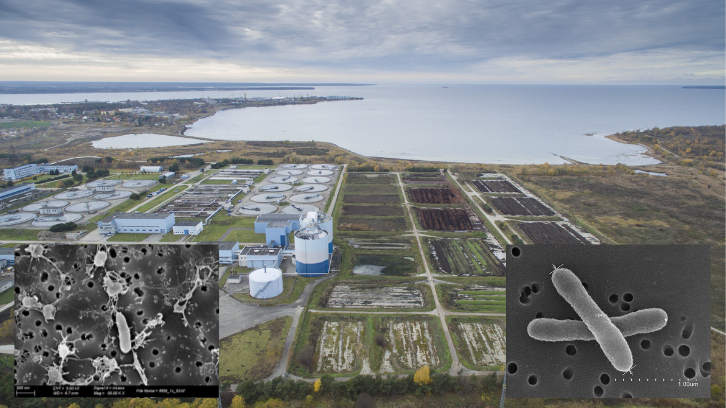Parvicella tangerina and Lysobacter luteus, two new bacteria isolated from a seawater-processing wastewater treatment plant

Researchers from the UAB, the Institut de Ciències del Mar and the Universitat de València have described Parvicella tangerina and Lysobacter luteus, two new microorganisms found in a sample of activated sludge from a wastewater treatment plant in Almeria. Both bacteria have interesting biotechnological properties.
Currently, a few thousand species of microorganisms have been described, which constitute a tiny percentage of the real microbial diversity, estimated at 1012 species, so our ignorance about microbes is enormous. Progress in the isolation and description of new microbial species is therefore essential to gather information on the physiology and ecology of these small living beings with which we coexist.
Researchers from the Department de Genètica i Microbiologia of the UAB, the Institut de Ciències del Mar (ICM-CSIC), the Departamento de Microbiología y Ecología of the Universitat de València and the Colección Española de Cultivos Tipo (CECT) - Universitat de València, have characterized two new microorganisms from a sample of activated sludge from a wastewater treatment plant located in the province of Almería, which uses seawater. There are very few plants of this type operating in the world, and this one in particular purifies influents that contain intermediate products from amoxicillin synthesis. One of these microorganisms, belonging to the order Flavobacteriales, constitutes a representative of a new genus and species in a new family (Parvicellaceae) and produces an orange pigment, for which the name Parvicella tangerina (Parvicella: small cell, tangerina: tangerine color) was proposed. The cells of this species are nonmotile Gram-negative cocci, coccobacilli, or short rods that grow as orange-colored colonies and produce abundant extracellular material. It is a strictly aerobic bacterium, chemoorganoheterotrophic (means that it uses organic compounds to grow), mesophilic (grows at intermediate temperatures), neutrophilic (it requires neutral pH) and halophilic (it needs salt), with complex ionic requirements. The sequencing of its genome (3.098.000 base pairs) revealed the presence of genes with chitinase and peptidase capacity, as well as genes related to antibiotic resistance and the reduction of arsenic and mercury.
The second microorganism represents a new species of a Gram-negative motile bacillary bacterium of the genus Lysobacter (family Xanthomonadaceae, order Xanthomonadales, class Gammaproteobacteria) and forms bright yellow colonies, for which the name Lysobacter luteus was proposed. This microorganism is also aerobic and chemoorganoheterotrophic, mesophilic, neutrophilic and halophilic, with a high proteolytic capacity. Its genome (2.770.000 base pairs) indicates the presence of a large number of genes related to flagellar motility and chemotaxis, as well as antibiotic and arsenic resistance genes.
Scanning electron microscopy (SEM) images showing cocci, coccobacilli and bacilli of the bacterium Parvicella tangerina on the left (source: Olga Sánchez), and on the right image cells of the bacterium Lysobacter luteus (source: Teresa Lucena)
The singularity of the environment, a wastewater treatment plant that uses seawater instead of freshwater due to the scarcity of hydric resources in the location, makes both microorganisms of high interest, not only due to their taxonomic novelty, but also because of the biotechnological potential they can present.
(1) Department of Genetics and Microbiology, Faculty of Biosciences, Universitat Autònoma de Barcelona (UAB).
(2) Department of Microbiology and Ecology, Universitat de València (UV).
References
Lucena T, Sánchez O, Sanz-Saez I, Acinas SG, Garrido L, Mas J, Macián MC, Ruvira MA, Arahal DR, Pujalte MJ. Parvicella tangerina gen. nov., sp. nov. (Parvicellaceae fam. nov., Flavobacteriales), first cultured representative of the marine clade UBA10066, and Lysobacter luteus sp. nov., from activated sludge of a seawater-processing wastewater treatment plant. Int J Syst Evol Microbiol. 2022 Aug;72(8). doi: 10.1099/ijsem.0.005498. PMID: 35997078.


